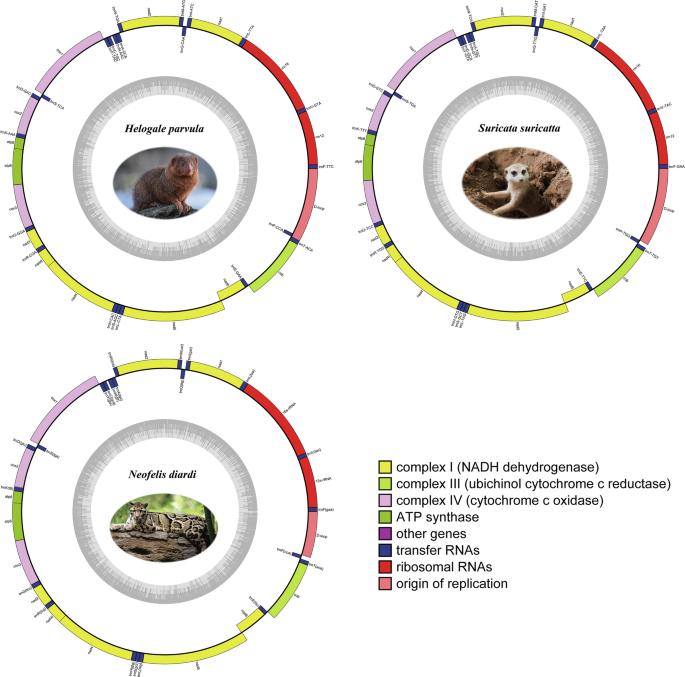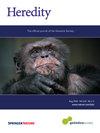Mitogenomic resolution of phylogenetic conflicts and adaptive signatures in feliform carnivorans
IF 3.9
2区 生物学
Q2 ECOLOGY
引用次数: 0
Abstract
Feliform carnivores face dual threats from habitat fragmentation and climate change, but unresolved phylogenetic relationships and unclear adaptive mechanisms hinder the development of conservation strategies. This study integrates mitochondrial genome data from 75 extant species (including three newly obtained taxa: Helogale parvula, Suricata suricatta, and Neofelis diardi) to resolve taxonomic controversies and reveal adaptive evolutionary mechanisms. Bayesian phylogenetic reconstruction strongly supports a sister-group relationship between Felidae and Prionodontidae (posterior probability PP = 1.0), overturning traditional morphological classifications. Divergence time estimation indicates that the crown group of Feliformia originated in the Middle Eocene (46 Ma), with key radiation events synchronized with Oligocene-Miocene climatic upheavals and continental collisions. Adaptive evolution analyses show that mitochondrial protein-coding genes (PCGs) are predominantly under purifying selection. However, significant positive selection signals were detected in the ND4 gene of Nandinia binotata and the COX2 gene of Pantherinae, potentially linked to arid adaptation and predatory energy demands, respectively. The frequent use of GTG start codons in the COX1 gene of Neofelis diardi suggests metabolic fine-tuning for island ecosystems. Conservation genomics identifies Prionodon pardicolor and Neofelis nebulosa as Evolutionarily Significant Units (ESUs) with heightened vulnerability to habitat fragmentation. By integrating mitogenomic architecture, deep-time biogeography, and contemporary selection pressures, this study establishes a unified framework bridging molecular systematics and conservation strategies, providing scientific guidance for protecting rapidly evolving lineages.

类人猿系统发育冲突和适应特征的丝分裂基因组分析。
类人猿食肉动物面临栖息地破碎化和气候变化的双重威胁,但尚未解决的系统发育关系和不明确的适应机制阻碍了保护策略的发展。本研究整合了75个现存物种(包括3个新获得的分类群:Helogale parvula、Suricata suricatta和Neofelis diardi)的线粒体基因组数据,以解决分类上的争议,揭示适应进化机制。贝叶斯系统发育重建强有力地支持Felidae和Prionodontidae之间的姐妹类群关系(后验概率PP = 1.0),推翻了传统的形态分类。发散时间估计表明,Feliformia冠群起源于中始新世(46 Ma),关键辐射事件与渐新世-中新世气候剧变和大陆碰撞同步。适应性进化分析表明,线粒体蛋白编码基因(PCGs)主要处于纯化选择下。然而,在Nandinia binotata的ND4基因和Pantherinae的COX2基因中检测到显著的正选择信号,可能分别与干旱适应和掠食性能量需求有关。新蕨COX1基因中GTG启动密码子的频繁使用表明岛屿生态系统存在代谢微调。保护基因组学鉴定出pardioldon Prionodon和Neofelis nebulosa是进化显著单位(esu),对栖息地破碎化具有高度脆弱性。通过整合有丝分裂基因组结构、深时间生物地理学和当代选择压力,本研究建立了一个统一的框架,连接分子系统学和保护策略,为保护快速进化的谱系提供科学指导。
本文章由计算机程序翻译,如有差异,请以英文原文为准。
求助全文
约1分钟内获得全文
求助全文
来源期刊

Heredity
生物-进化生物学
CiteScore
7.50
自引率
2.60%
发文量
84
审稿时长
4-8 weeks
期刊介绍:
Heredity is the official journal of the Genetics Society. It covers a broad range of topics within the field of genetics and therefore papers must address conceptual or applied issues of interest to the journal''s wide readership
 求助内容:
求助内容: 应助结果提醒方式:
应助结果提醒方式:


